When it comes to surf culture, few brands have made as lasting an impact as Hang Ten. Founded in 1960 by Duke Boyd and Doris Moore in Seal Beach, California, Hang Ten began as a humble surf wear company and grew into a global lifestyle brand. Initially focused on creating apparel that could withstand the tough conditions of the ocean, Boyd and Moore’s vision for functional, stylish board shorts soon took off, helping establish Hang Ten as a pioneer in the surf apparel industry. With its iconic golden, embroidered barefoot logo, Hang Ten became a symbol of West Coast surf culture, spreading its influence well beyond the beaches of California.
The name “Hang Ten” itself is rooted in surf lore, referring to the maneuver of hanging all ten toes over the nose of the surfboard – a move that symbolizes mastery and balance on the waves. This surf spirit was embedded in the brand from the start, and it didn’t take long for Hang Ten to become a favorite among surfers not just for its innovative designs but also for its cultural connection to the sport. The brand’s cheeky advertisements and support of surf competitions helped turn young riders into recognized athletes, giving Hang Ten a permanent place in the history of surfing.
Over the decades, the brand evolved, expanding its product lines and market reach. While it began as a surf-centric brand, Hang Ten has grown into a global lifestyle company, offering a wide range of casual clothing, accessories, and even licensed products like skateboards and sun care. Even after being sold to various owners, including its current Hong Kong-based parent company, Hang Ten remains a beloved name in surf culture, continuing to embody the laid-back, adventurous spirit of the sport that inspired its creation.
80s Hang Ten Psychedelic Commercial
How to tell if Hang Ten is vintage from the logo
Hang Ten, a brand rooted in surf culture since the 1960s, is instantly recognizable by its iconic footprint logo. Over the years, Hang Ten has made subtle but noticeable changes to its logo, helping to date vintage pieces. By paying attention to details such as font style, the shape of the footprints, and overall design, you can determine if your Hang Ten item is vintage or from a more recent era. Below is a guide to the logos provided, focusing on their defining features for easier identification.
1970s to 1990s Hang Ten logo
- The original Hang Ten logo features two prominent bare footprints, signifying the brand’s surf culture roots.
- The logo is enclosed within a bold rectangular border, often seen in yellow and brown color schemes.
- The text “HANG TEN” appears in a blocky, rounded font beneath the footprints.
- This logo exudes a retro feel typical of the 1970s to 1990s branding style.
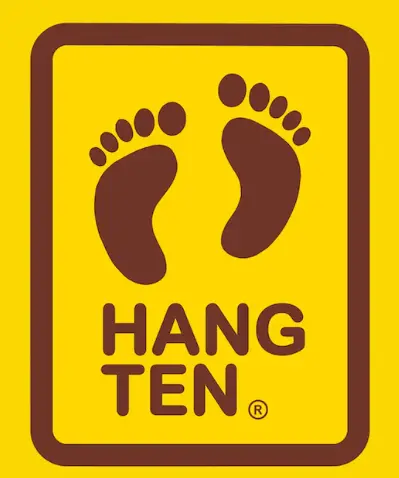
1970s to 1990s Hang Ten logo
2000s to now Hang Ten logo
- The updated logo retains the iconic footprint design but with a more minimalist approach.
- The font has been modernized, with “HANG” in a more stylized, contemporary typeface while “TEN” is smaller and streamlined.
- The footprints are now more refined, appearing cleaner and with a more polished look compared to earlier versions.
- This version is typically used in a monochrome palette, often in black or white, reflecting modern design trends.
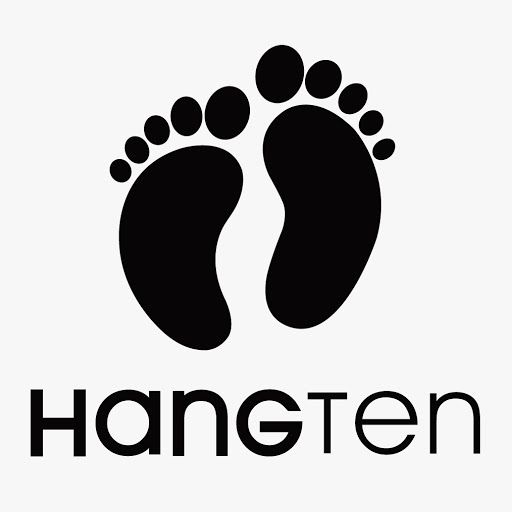
2000s to now Hang Ten logo
How to tell if Hang Ten is vintage from the tags
The Hang Ten brand, known for its iconic surf culture influence, has evolved its clothing tags through the decades. From the bold use of color and logo imagery in earlier years to more modern, sleek designs in the 2000s, each tag offers a glimpse into the era in which the garment was produced. These changes not only reflect the brand’s commitment to innovation but also offer a great way to determine if a piece of Hang Ten clothing is truly vintage.
Struggling to identify vintage tags or labels? Submit a picture on our vintage tag identification page, and we’ll help you out!
1970s vintage Hang Ten tags
- Features the iconic two bare footprints logo.
- Tag colors are bold and vibrant, with a yellow background and brown footprints.
- Includes “Hang Ten” text in bold serif lettering beneath the footprints.
- Additional care instructions may be found on the reverse side of the tag.
- Some tags are marked with “SANFORIZED” and other fabric treatment indicators.
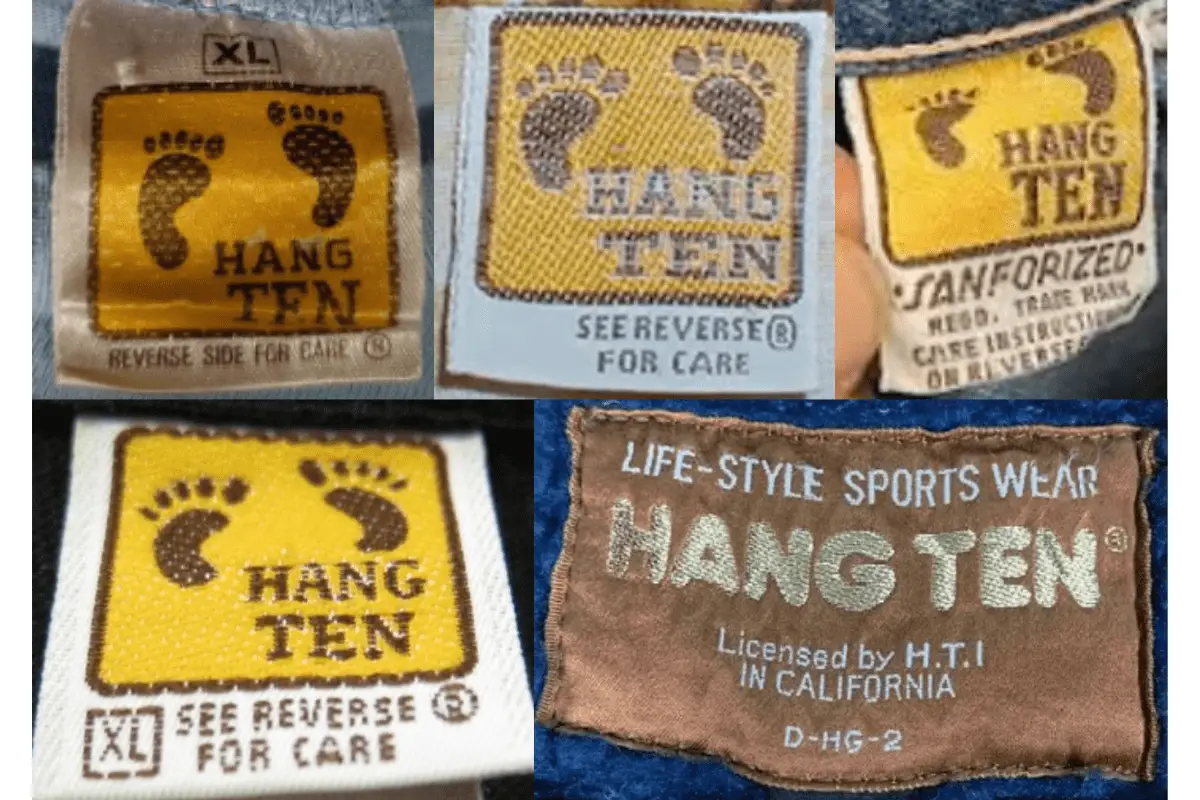
1970s Hang Ten tags
1980s vintage Hang Ten tags
- Continues to use the two footprints logo but often with more refined, clearer lines.
- Colors such as navy blue and white begin to appear, reflecting a slight shift toward modern designs.
- Tags sometimes include size indicators like “M” or “L” beneath the logo.
- Tag styles range from square to rectangular, with consistent use of bold font for the “Hang Ten” text.
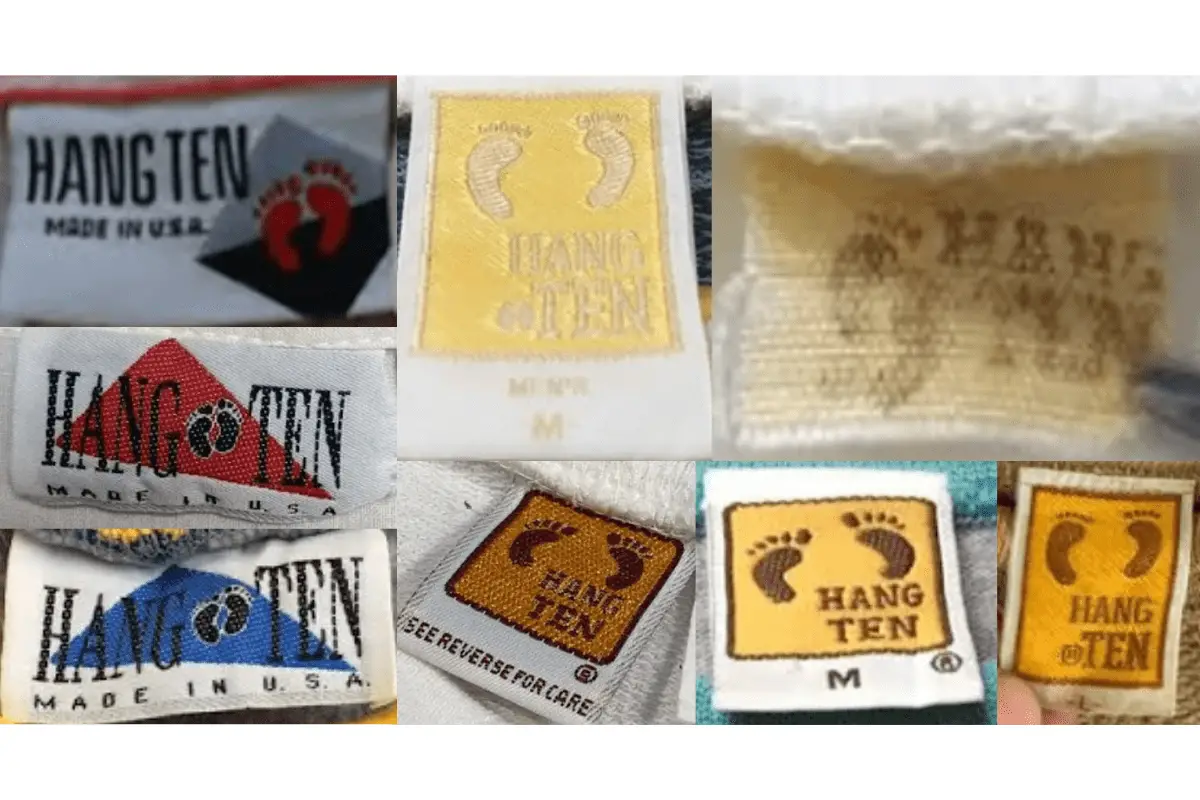
1980s Hang Ten tags
1990s vintage Hang Ten tags
- The logo remains prominent, with the footprints continuing to be a key feature.
- Tag designs become more detailed, sometimes incorporating the words “Made in U.S.A.” beneath the logo.
- Tags often feature a larger, more defined border and may include colorful elements like red or blue.
- Several variations of the logo and text placement, including the use of triangles or geometric shapes around the logo.
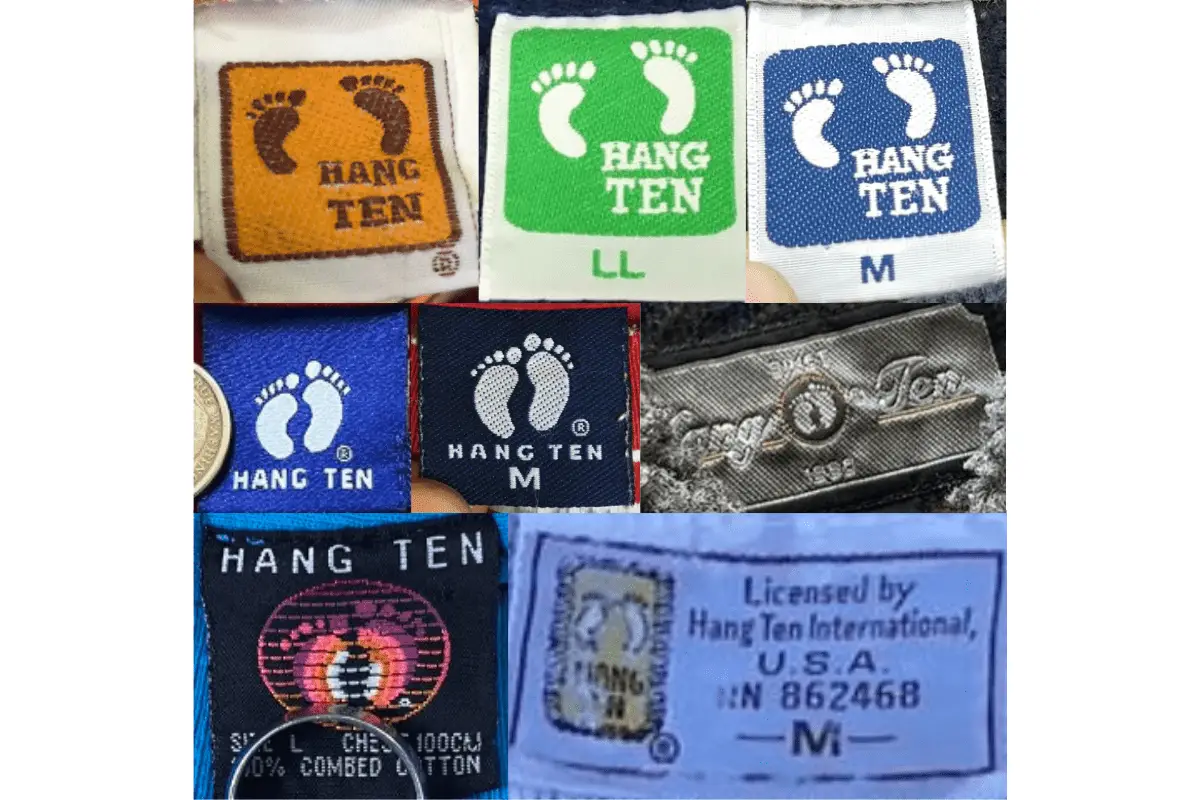
1990s Hang Ten tags
2000s vintage Hang Ten tags
- Tags begin to adopt a sleeker, more modern look, with smoother fonts and cleaner lines.
- Some tags use darker colors, such as black, blue, or gray, reflecting a more minimalist aesthetic.
- The “Hang Ten” name is often featured in a larger, bolder font, sometimes accompanied by “California since 1960” to reflect the brand’s heritage.
- Size indicators and care instructions are often located below the main logo on a separate line.

2000s Hang Ten tags
2010s vintage Hang Ten tags
- The design is modernized, with sleek layouts and more sophisticated branding.
- New tag materials, such as embossed labels and more intricate stitching, are introduced.
- Logo placement varies more significantly, often including phrases like “Slim Fit” or other style descriptors.
- Some tags emphasize sustainability, with terms like “Organic Cotton” used alongside the Hang Ten branding.
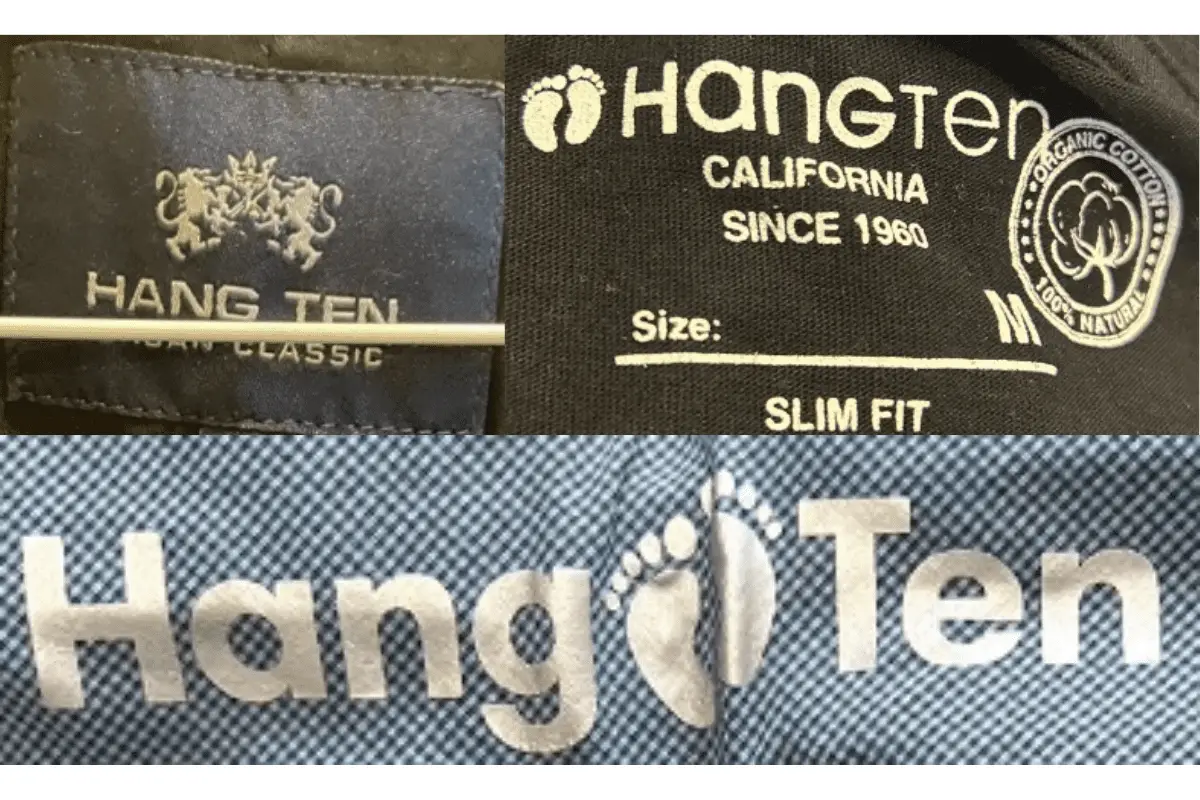
2010s Hang Ten tags
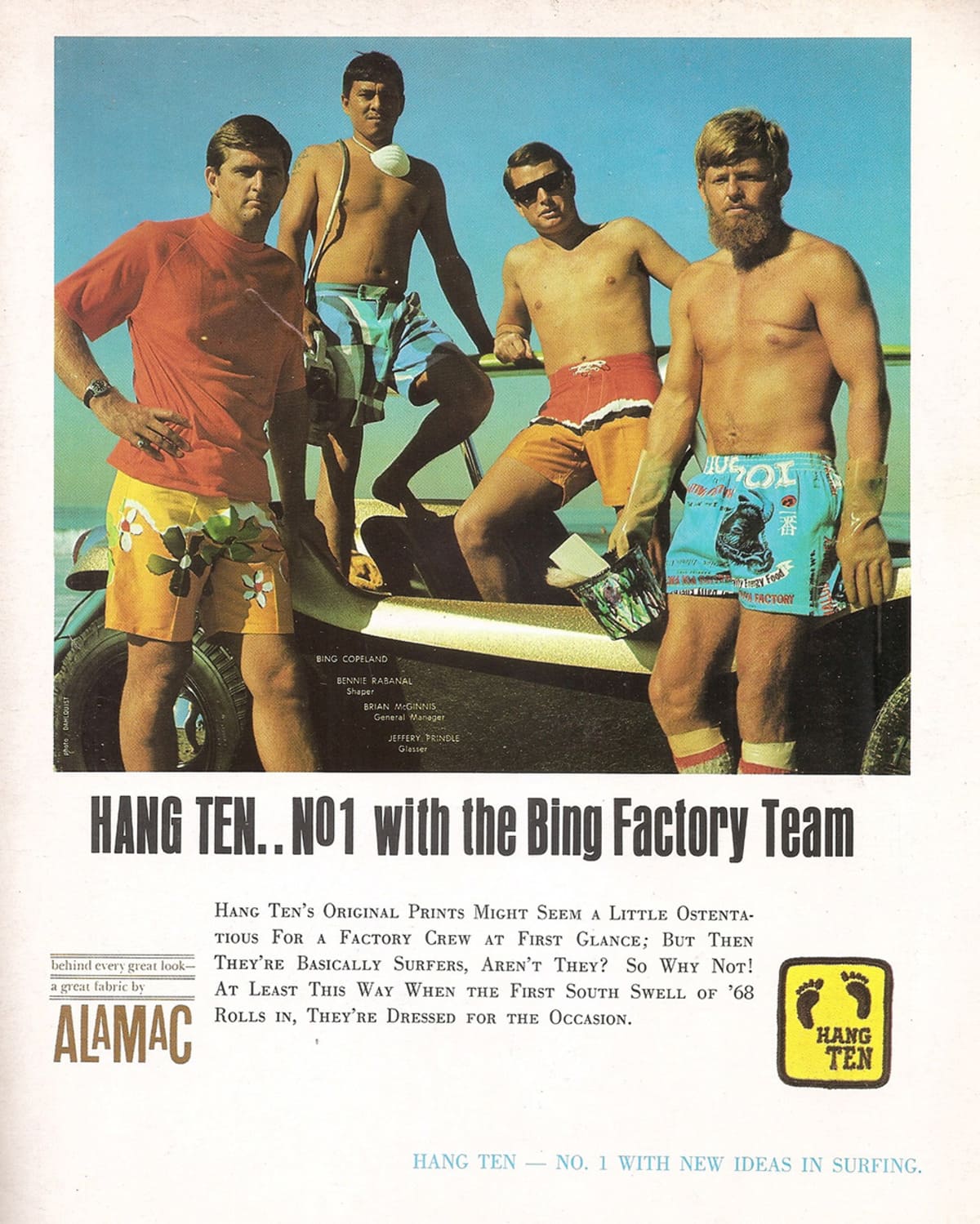


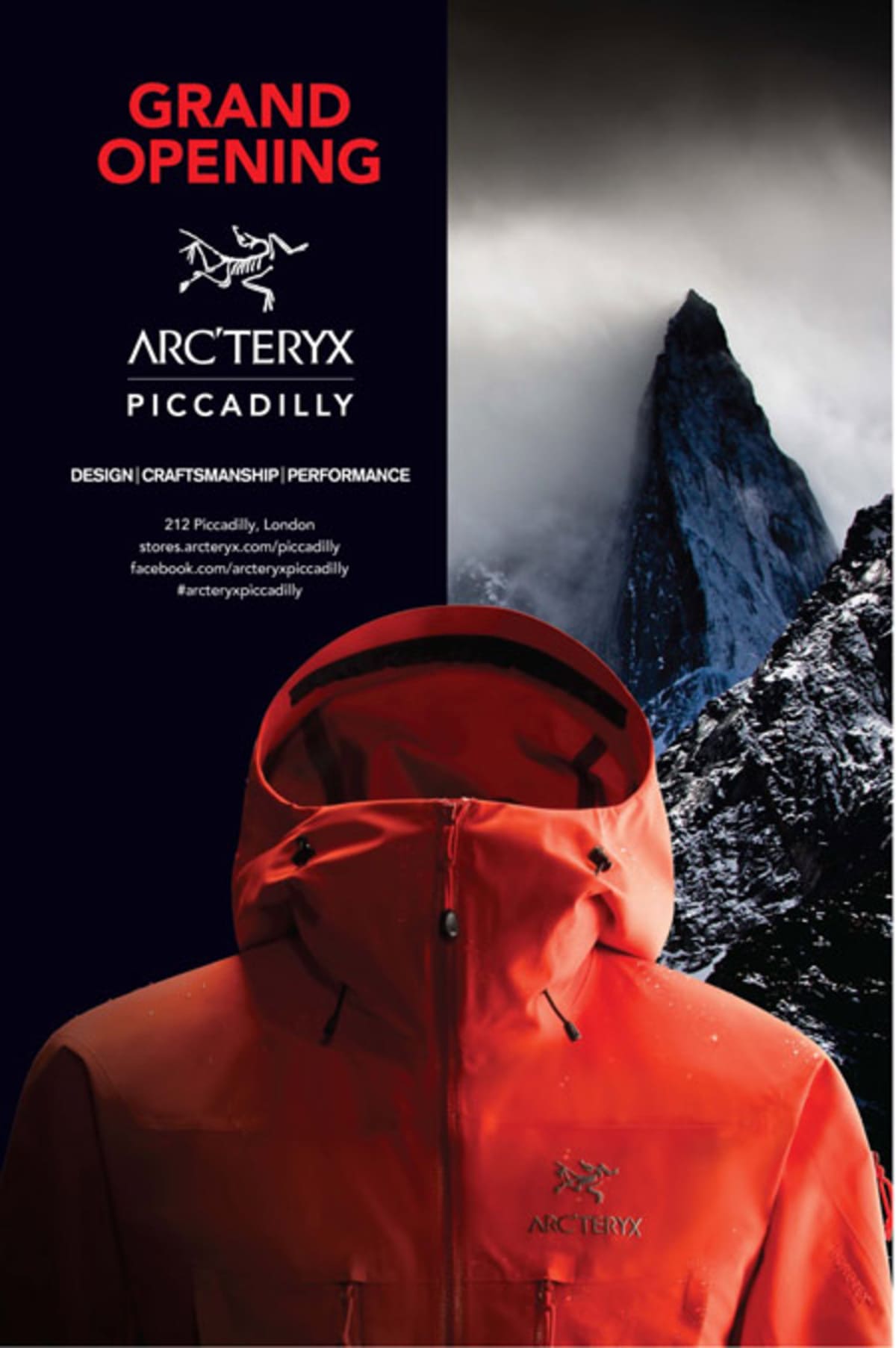
Gamificação ética envolve diretrizes que minimizam riscos no setor de apostas online, protegendo jogadores e evitando abusos.
Operadores devem implementar recursos como limites financeiros , permitindo que os usuários gerenciem sua atividade .
A conscientização sobre comportamento saudável fundamental para identificar sinais de alerta , como padrões compulsivos.
1win
A verificação de idade evita que menores acessem plataformas, enquanto parcerias com ONGs reforçam a ética .
Clareza sobre condições de uso assegura justiça, com auditorias independentes validando operações .